It's the time of year when my small pond is in peril. One of the suggestions you'll read when deciding where to put your pond is that it should not be near large trees due to the shade they provide and the leaves they will drop. Of course I put my pond directly under a large maple -- I didn't have another choice!
Autumn is the time of year that this becomes a problem, as shade the pond can tolerate -- piles of leaves in the water it cannot. The first year I just let the leaves fall and then pulled them out of the water later. This was really not fun, and I won't repeat it. Now I cover the pond with a net for a week or two until all of the leaves are down. It's not easy, it's not fun, but it's better than the "pull them out later" method.
Last year I tried to leave the potted plants standing, but they really interfered with net placement. This year I bent them all down:
They'll do this in a few weeks anyway, and I'm looking to simplify my tasks right now.
Last year I arched some poles across the water to support the netting. This was not easy, and was not entirely successful -- especially when two of the poles disconnected.
So this year I went with a different approach:
I floated a large block of styrofoam on the water, and draped the net over it!
You may be wondering why I let the water hyacinths cover almost the entire surface of the water. Everybody knows that having open water looks better, right?
Since I knew that netting season was quickly approaching, I let these plants go crazy. They'll support the net once the leaves start piling up and help to keep them out of the water. That's the plan at least -- I'll let you know how that goes.
One thing that I'm concerned about are gaps between the two netting pieces:
Instead of buying expensive one-piece pond netting, I buy much cheaper light-duty deer netting, and connect two pieces together. Zip ties are quick, but if you don't have enough of them you may end up with gaps.
Only after seeing these photos did I think of the right way to connect the netting pieces together: "stitch" them together with fishing line! Next year...
Even with two pieces the netting was not quite wide enough, so the shallow part of the water isn't covered...
...but that's fine because any leaves that fall here can easily be pulled out. Plus there's not much water here -- it's all frogbit!
The rock is keeping the edge down so leaves can't blow under. I stretched the netting as tightly as I could (which is one reason the gaps opened up) which made this edge rise up.
Once the leaves are all down I'll probably pull this up and throw it away as I did last year. This fine netting is not very strong and quite prone to snags and tangling. They make several different grades of pond netting, some of which can be used year after year and is much sturdier. I'd like to try some of those, but can't justify the price. If you have experience with better quality netting, please let me know about it!
So that's the pond protected. I hope the new method is an improvement over last year's.
.
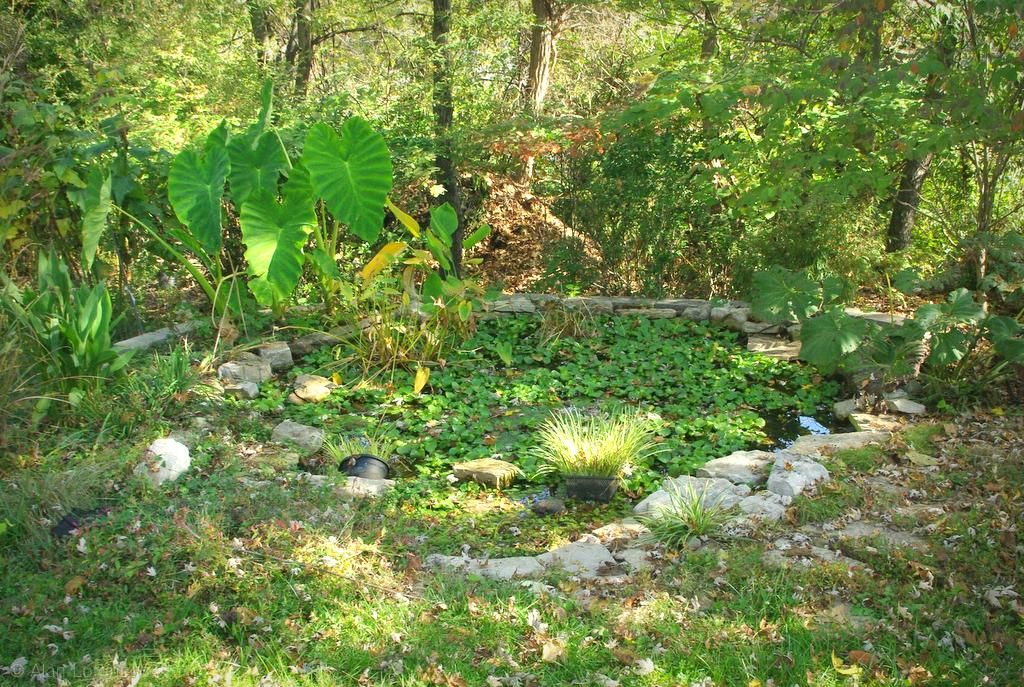
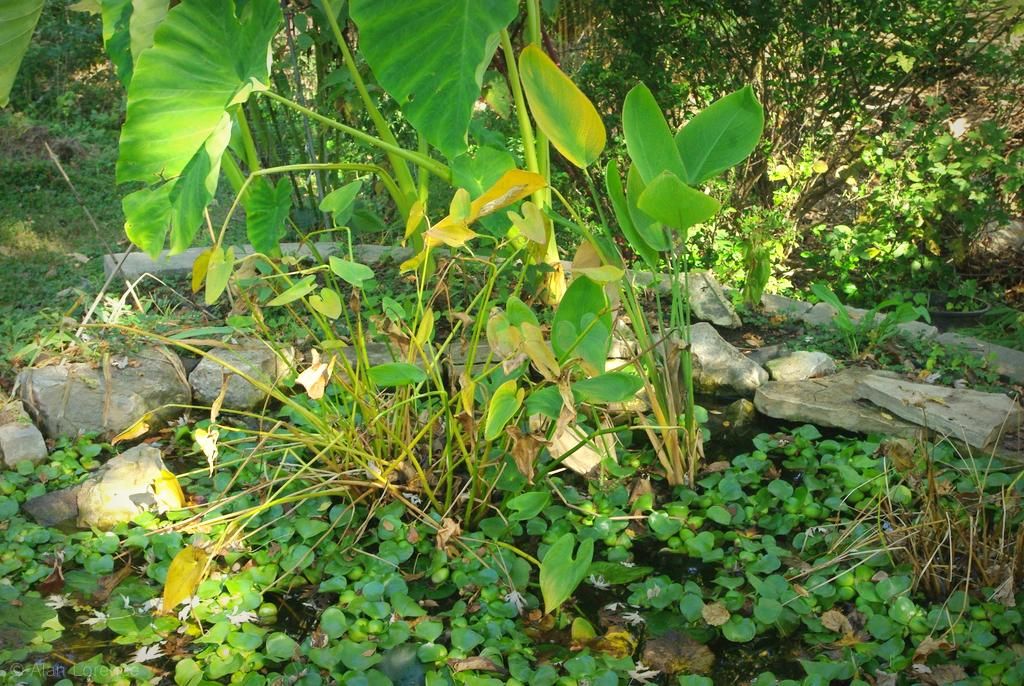
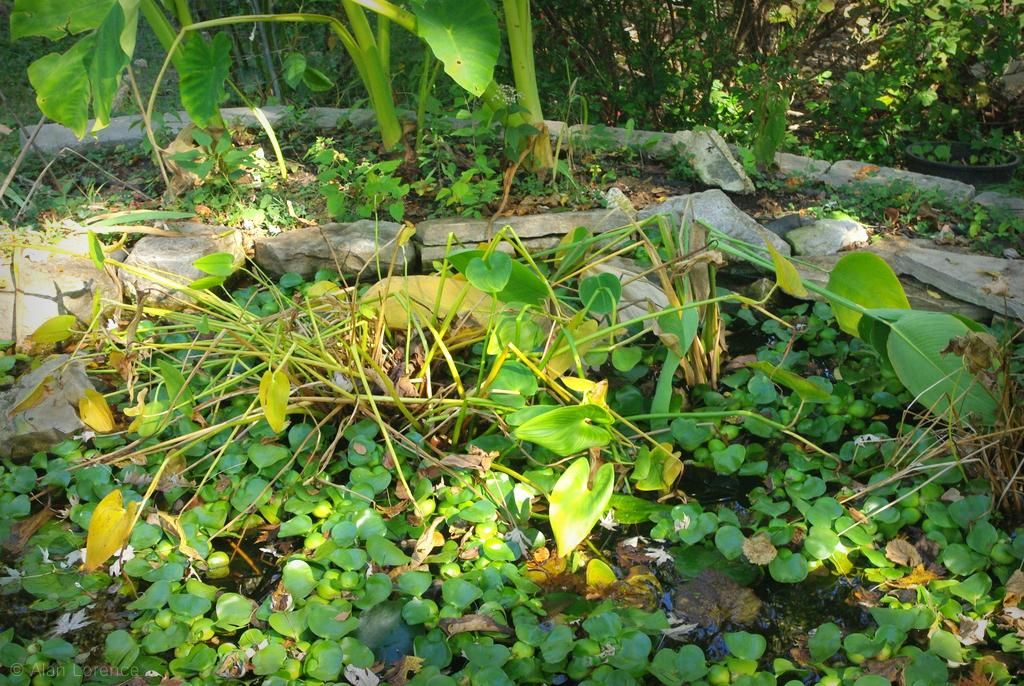
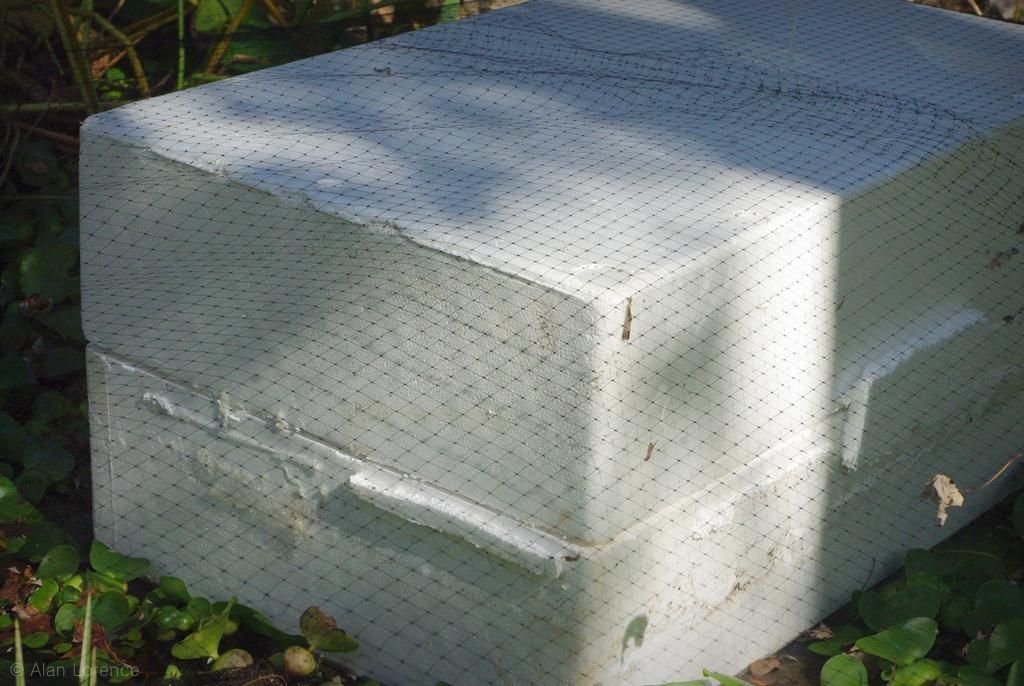
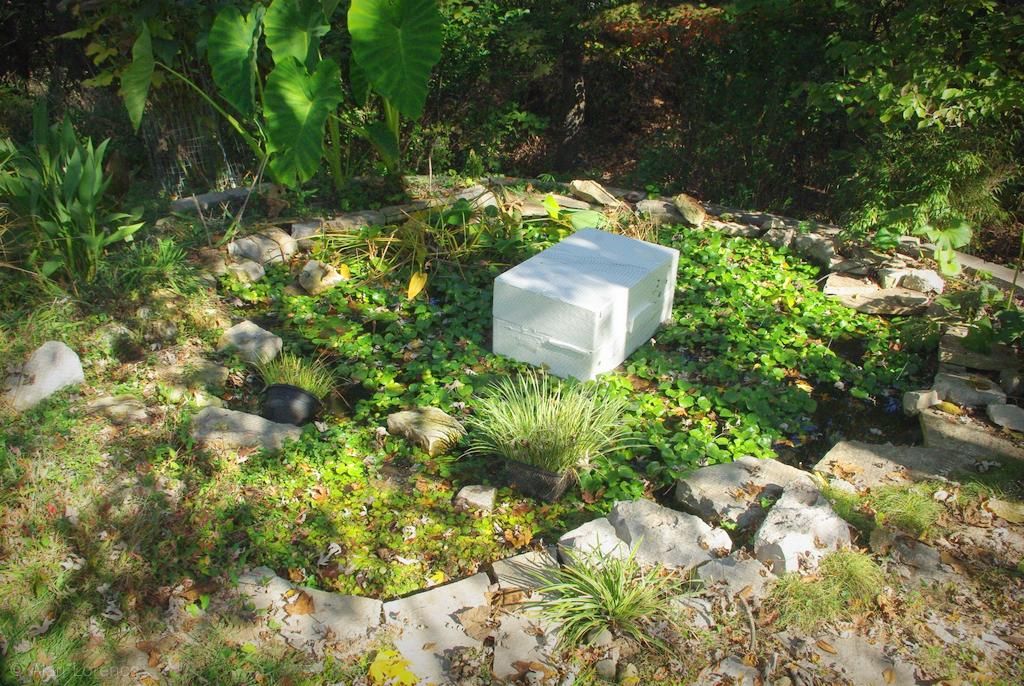
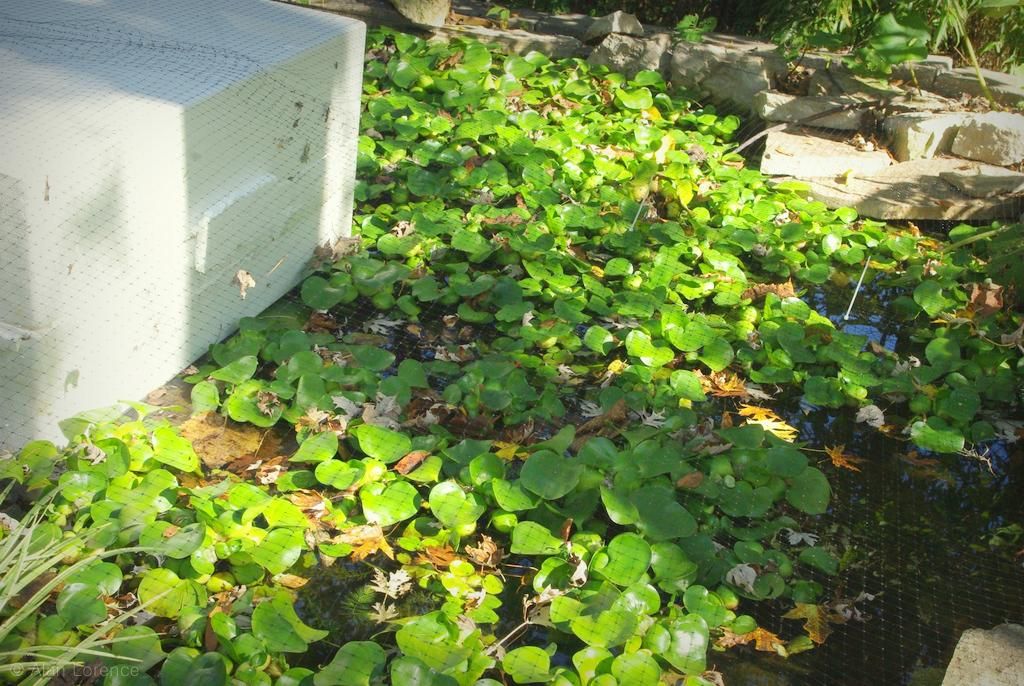
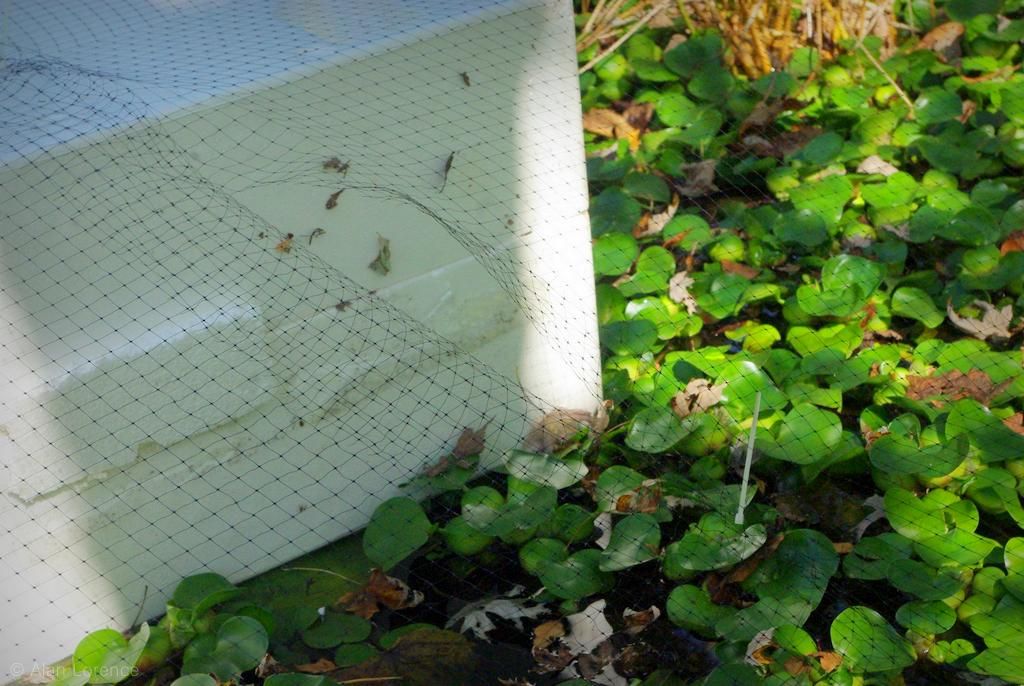
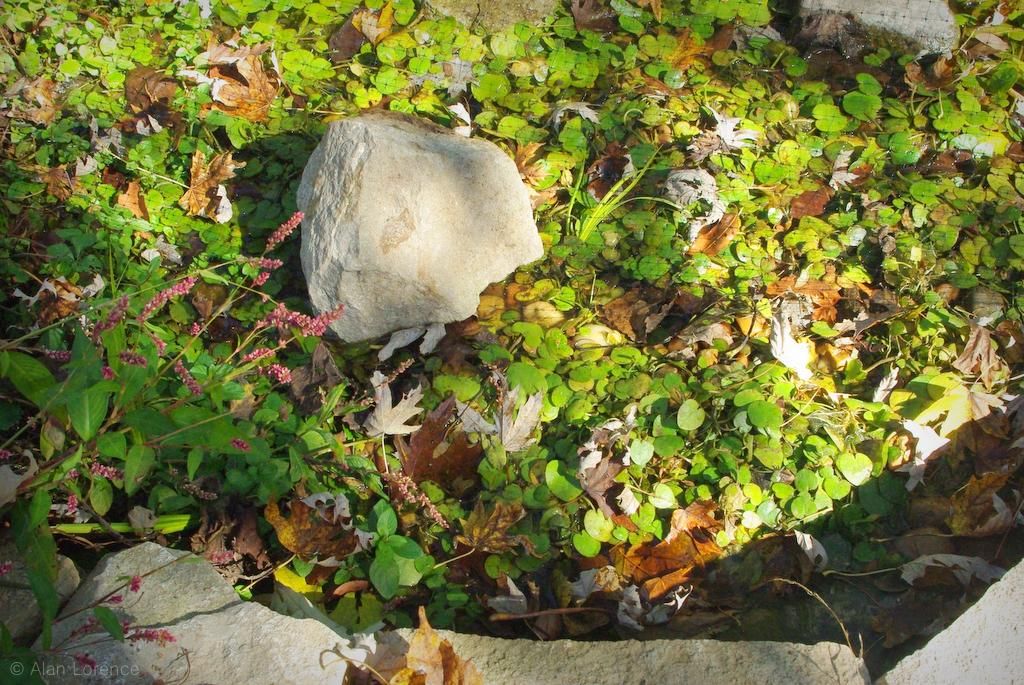
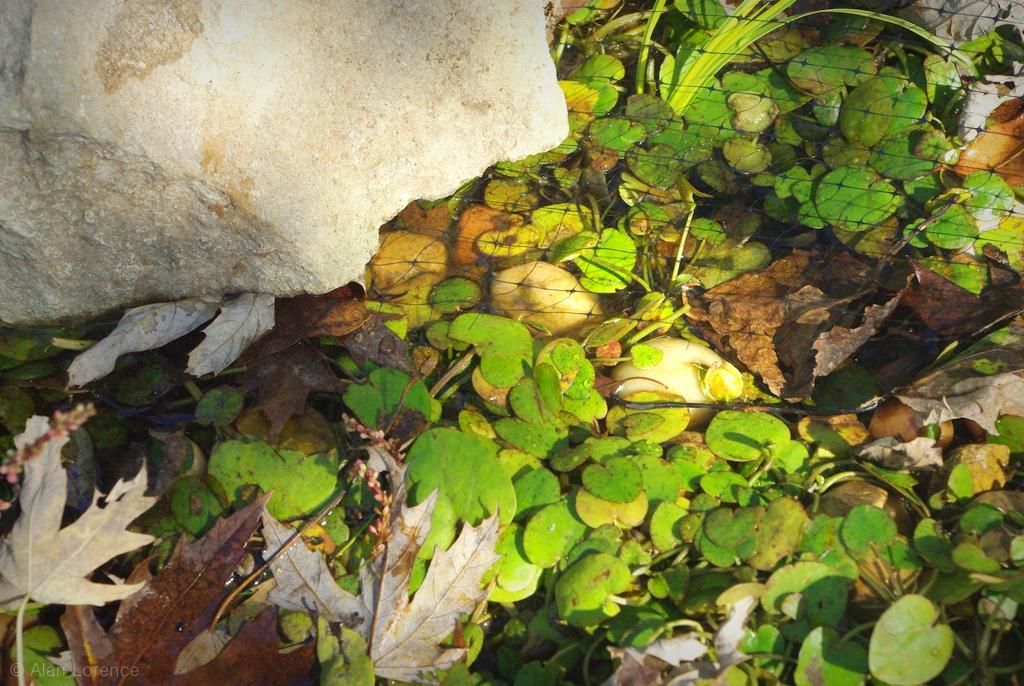
What about a fishing net?
ReplyDeleteI think your method and materials used are pretty good already. And also having a pond in a shady spot will help keep the water clear. Same effect with most of the surface covered by floating plants, plus the fish will be better hidden from predators :)
Haha, better attempt this year! My tiny pond is under a tree too, with lots of water lettuce that have taken over. Water...what water?
ReplyDeleteThe projects gardeners get up too. My son needs to do that with his swimming pool! You have reminded me that I will need to do a similar thing with my water feature when the live oak drops its leaves int he spring.
ReplyDeleteGenius idea! Like you, I ignored the advice and put my pond beneath trees. I go out with a net and skim the top daily (my surface area is much smaller than yours!) and since I have a recirculating pump in mine, it catches all the leaves that sink to the bottom. Unfortunately, that means pulling the pump out to clean it fairly frequently as well.
ReplyDeleteSo when do you take the hyacinths out? Ours have already turned to mush from the frost.
ReplyDeleteLisa: Looks like we'll have our first frost later this week, so I'll see what happens there. If they mush before the leaves all fall, that's going to create more work for me. :(
ReplyDelete